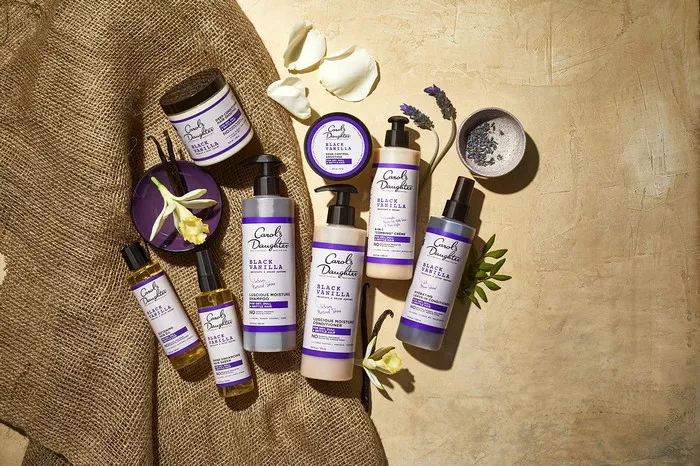Low porosity hair requires special care to maintain moisture and prevent breakage. Deep conditioning is essential for this hair type to penetrate the cuticle and provide nourishment from within. In 2024, the market offers an array of deep conditioners tailored specifically for low porosity hair, each boasting unique formulations and benefits. To help you navigate through the myriad of options, we’ve curated a list of the best deep conditioners for low porosity hair in 2024.
Understanding Low Porosity Hair
Before delving into the recommended deep conditioners, it’s crucial to understand what low porosity hair entails. Low porosity hair has a tightly bound cuticle layer that repels moisture, making it difficult for products to penetrate. As a result, this hair type often feels dry, prone to product buildup, and is challenging to moisturize effectively.
Key Ingredients to Look For
When selecting a deep conditioner for low porosity hair, it’s essential to opt for products with lightweight yet potent ingredients that can penetrate the cuticle layer. Some key ingredients to look for include:
1. Coconut Oil: Known for its ability to penetrate the hair shaft, coconut oil helps moisturize and strengthen low porosity hair without weighing it down.
2. Aloe Vera: Aloe vera contains enzymes that promote hair growth and lock in moisture, making it an excellent choice for low porosity hair.
3. Protein: Protein-rich ingredients like hydrolyzed keratin or silk protein help strengthen the hair shaft and improve elasticity, reducing breakage in low porosity hair.
4. Glycerin: Glycerin attracts moisture from the air into the hair shaft, helping to hydrate low porosity hair and prevent dryness.
Top Deep Conditioners for Low Porosity Hair in 2024
1. SheaMoisture Baobab & Tea Tree Oils Low Porosity Protein-Free Conditioner: This protein-free formula is enriched with baobab and tea tree oils, which moisturize and balance the scalp while promoting healthy hair growth. It’s lightweight and won’t weigh down low porosity hair, making it ideal for regular use.
2. Carol’s Daughter Black Vanilla Moisture & Shine Hydrating Conditioner: Infused with a blend of moisturizing ingredients like aloe leaf juice and sweet almond oil, this conditioner nourishes low porosity hair, leaving it soft, shiny, and manageable. It also helps detangle knots and reduce frizz, making it a favorite among those with low porosity hair.
3. ORS Olive Oil Replenishing Conditioner: Formulated with olive oil, this conditioner deeply moisturizes and strengthens low porosity hair, leaving it smooth and hydrated. It also contains hydrolyzed keratin to repair damaged strands and improve elasticity, making it an excellent choice for those seeking to restore their hair’s health.
4. Cantu Shea Butter for Natural Hair Hydrating Cream Conditioner: This hydrating conditioner is enriched with shea butter and essential oils, which moisturize and nourish low porosity hair without weighing it down. It helps detangle knots and reduce breakage, leaving hair soft, smooth, and easy to manage.
5. Mielle Organics Babassu Oil & Mint Deep Conditioner: Infused with babassu oil and mint extracts, this deep conditioner hydrates and revitalizes low porosity hair, leaving it refreshed and rejuvenated. It also contains protein-rich ingredients like hydrolyzed keratin to strengthen the hair shaft and reduce breakage, making it an excellent choice for damaged or brittle hair.
Tips for Maximizing Results
To get the most out of your deep conditioning routine for low porosity hair, consider the following tips:
1. Use Heat: Applying heat while deep conditioning helps open the hair cuticle, allowing the product to penetrate more effectively. You can use a hooded dryer, steamer, or even a warm towel to generate heat during the conditioning process.
2. Steam Treatment: Incorporating steam into your deep conditioning routine can help hydrate low porosity hair more effectively. You can use a handheld steamer or sit in a steamy bathroom with your deep conditioner applied for added moisture retention.
3. Rinse with Cool Water: After deep conditioning, rinse your hair with cool water to seal the cuticle and lock in moisture. This helps prevent frizz and keeps your hair looking smooth and shiny.
4. Limit Protein: While protein is beneficial for strengthening low porosity hair, using too much can lead to stiffness and breakage. Incorporate protein treatments into your routine once or twice a month, depending on your hair’s needs.
5. Protective Styling: Consider protective styles like braids, twists, or buns to minimize manipulation and reduce breakage while your hair retains moisture from deep conditioning treatments.
In conclusion, choosing the right deep conditioner is crucial for maintaining the health and vitality of low porosity hair. By selecting products with nourishing ingredients and following a consistent deep conditioning routine, you can keep your hair moisturized, strong, and beautiful in 2024 and beyond.
FAQs
How do you deep hydrate low porosity hair?
Deep hydrating low porosity hair requires techniques that open up the cuticles to allow moisture to penetrate effectively. Methods like using steam during conditioning, applying heat with a hooded dryer, or using warm towels can help lift the cuticles for better absorption of hydrating products.
Which moisture method is best for low porosity hair?
Low porosity hair benefits from lightweight, water-based products that won’t weigh it down. Methods like the L.O.C. (Liquid, Oil, Cream) or L.C.O. (Liquid, Cream, Oil) methods work well. Additionally, using water-based leave-in conditioners and avoiding heavy oils can prevent buildup and keep the hair adequately moisturized.
What is bad for low porosity hair?
Low porosity hair tends to be prone to buildup, so using heavy oils and butters can exacerbate this issue. Additionally, overuse of protein treatments can make the hair stiff and brittle. Avoiding products with drying alcohols and sulfate-based shampoos is also crucial to maintain moisture balance.
How long should you leave deep conditioner in low porosity hair?
Deep conditioning low porosity hair requires a balance. While leaving the conditioner on for too long may not necessarily increase its effectiveness, 30 minutes to an hour with heat (such as a steamer or hooded dryer) is generally recommended. This allows the product to penetrate the hair shaft effectively without causing excessive buildup.


